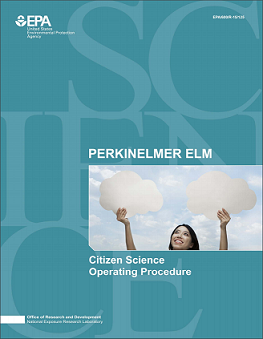Air Sensor Standard Operating Procedures (SOPs)

Standard operating procedures (SOPs) are written, step-by-step instructions that describe how to perform a routine activity with consistency. EPA scientists have developed SOPs for several air sensors they have evaluated or used in field projects. These guides may assist uses of the devices.
Numerous air quality sensors have come to market in recent years. Some have extensive user manuals while others do not. Regardless, manuals may not include user specific details for all routine activities that need to be done with consistency (e.g., detailing where data should be saved during download). EPA scientists routinely develop SOPs to document such details for their sensor evaluation efforts and other field projects. They also use SOPs to document observations about the sensor or the sensor data, methods for verifying proper operation, the available method(s) for downloading or logging data, troubleshooting tips, and any calibration or cleaning procedures.
DISCLAIMERS:
- These Standard Operating Procedures (SOPs) are NOT official EPA methods and have not been validated. They have been reviewed and approved internally by EPA to meet data quality objectives associated with the work in which they were used.
- Mention of trade names or commercial products does not constitute EPA endorsement or recommendation for use.
The following guides, published as EPA Reports, were designed with citizen science applications in mind. However, they will assist all users in operating, troubleshooting and calibrating the air sensors.
- PerkinElmer Elm
- ToxiRAE Pro PID
- CairPol CairClip NM-VOC
- CairPol CairClip O3-NO2
- Met One 831
- UniTec Sens-It
- Dylos DC1100
EPA also has developed several SOPs that have not been formally published or translated for general users. Should you need guidance on the use of one of the devices below, EPA researchers may have a draft SOP that could be shared, provided that the user adapt it for their project. Please use the “Contact Us” link below to request one of these draft SOPs:
- Plantower 7003 OEM sensor
- CairPol CairClip NO2
- TES 5322
- Met One Aerocet 831
- Aeroqual Series 500 Base Unit with Interchangeable Sensor Heads (O3, NO2, PM)
- PurpleAir PA-II-SD
- Vaisala AQT420
- Sens-IT RAMP
- APT Maxima
- Aeroqual AQY
- Clarity Node
- QuantAQ ARISense
- Pocketlab PocketLabAir
